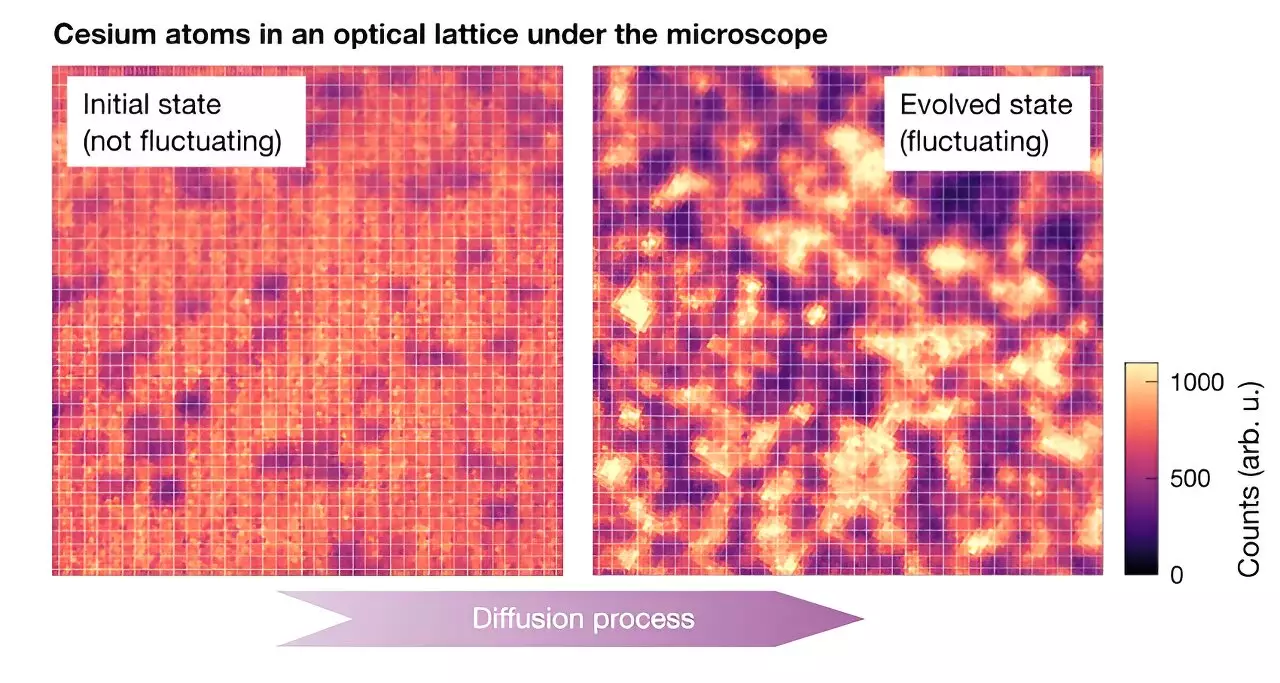The intricate world of quantum physics has long fascinated researchers, but new strides in understanding the behavior of large quantum systems are paving the way for significant advancements in the field. A groundbreaking study published in *Nature Physics* conducted by a team from Ludwig-Maximilians-Universität, Max-Planck-Institut für Quantenoptik, Munich Center for Quantum Science and Technology (MCQST), and the University of Massachusetts sheds light on the phenomenon of equilibrium fluctuations in extensive quantum systems. This exploration has implications not only for theoretical physics but also for practical applications in quantum technology.
Simulating quantum systems that contain vast numbers of particles is a computationally daunting task. Traditional methods of simulation require tracking the movement and interactions of each individual particle, a process that quickly becomes unmanageable as the particle count increases. Julian Wienand, a co-author of the study, describes this conundrum by visualizing a box filled with numerous particles—a scenario where predicting future behavior becomes overwhelmingly complex due to the sheer number of variables.
As computational limitations hinder the direct simulation of such systems, researchers have turned their attention to hydrodynamics as a potential solution. By applying the principles of hydrodynamics, physicists can approximate the behavior of particles not as individuals but rather as parts of a continuous density field that adheres to simple differential equations. This simplification can help unlock valuable insights into the quantum world.
The researchers introduced the innovative concept of fluctuating hydrodynamics (FHD), which extends classical hydrodynamics by incorporating random fluctuations that characterize quantum systems. As Wienand elucidates, while the density field defined by hydrodynamics may be influenced by rapid, chaotic particle movements, FHD allows scientists to effectively integrate these fluctuations as a form of white noise into differential equations. This means that even in chaotic settings, a semblance of predictability emerges, providing a macroscopic view of otherwise complex quantum systems.
This groundbreaking expansion of classical theories opens the door to a deeper understanding of chaotic quantum systems—an area previously dominated by uncertainty. The novelty of FHD lies in its bridging of the relationship between microscopic quantum phenomena and macroscopic behavior, offering a new tool for scientists seeking to comprehend quantum systems.
The research team utilized a cesium (133Cs) quantum gas microscope, which afforded them the capability of imaging individual atoms in ultracold atomic gases. By trapping the atoms within an optical lattice created by laser light, the researchers composed a quantum many-body system ripe for analysis. Through this sophisticated technique, they could observe and document atom number fluctuations with remarkable precision.
Wienand and colleagues initialized their system by positioning atoms in a uniform spatial arrangement before altering the lattice depth, prompting the atoms to disperse and interact. This marked the beginning of a diffusion process that ultimately led to thermalization. By meticulously tracking these fluctuations over time, the researchers verified that the system behaved in accordance with the principles of FHD, allowing them to measure vital parameters such as the diffusion constant.
The results of this investigation signify an important milestone in quantum physics. By demonstrating that FHD can be applied to chaotic quantum systems both qualitatively and quantitatively, the researchers have provided a new framework for understanding how macroscopic interactions can emerge from seemingly chaotic microscopic dynamics. This paradigm shift suggests that even complex quantum systems possess underlying simplicity on a larger scale.
A pivotal aspect of their findings is the diffusion constant—a property typically associated with equilibrium states. The revelation that this constant can be measured in out-of-equilibrium quantum systems showcases the versatility of FHD in unraveling the connections between equilibrium and non-equilibrium phenomena.
The research team, driven by their promising initial findings, is embarking on further studies using the cesium quantum gas microscope. Future investigations aim to delve into uncharted territories, including the dynamics of fluctuations in non-thermalizing systems. They also seek to explore additional statistical measures and potentially adapt FHD to describe more complex observables.
By continuing to unravel the complexities of quantum many-body systems, Grüner, Wienand, and their colleagues may enhance our understanding of quantum technology applications and contribute to next-generation innovations in quantum computing and simulation. As our grasp of these systems deepens, we will likely uncover more connections between classical and quantum theories, propelling the field forward into new realms of discovery.


Leave a Reply